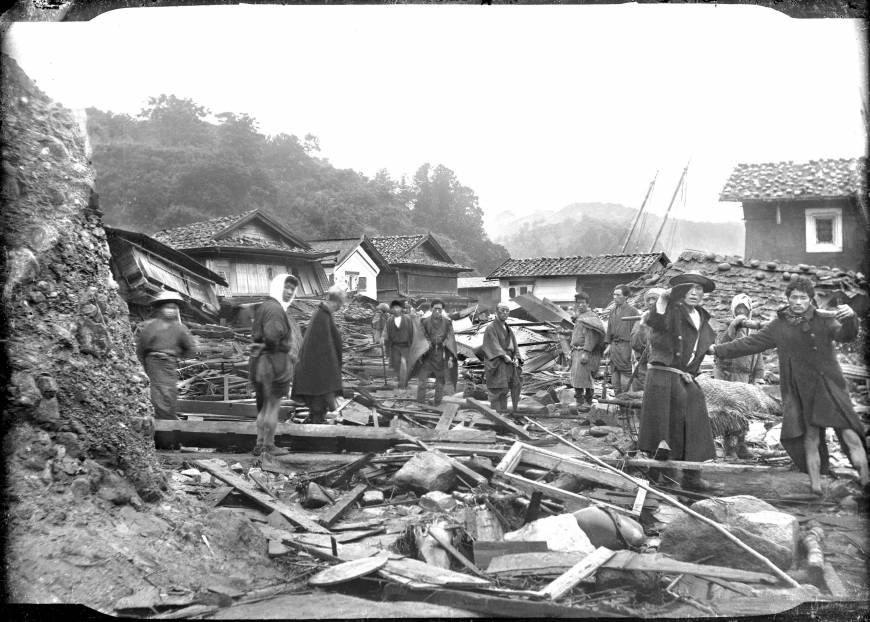A strong rumble. A long, deep thunder at sea, like a storm was brewing.
On June 15, 1896, the inhabitants of the coastal prefectures of Sanriku (Japan) did not work, they were on the street celebrating a national celebration.
It was 7:33 p.m. (local time) when the great roar was heard from the sea, followed by a long shaking due to an earthquake.
The tsunami was immediately visible on the horizon from the heights of Kesen district, just inland, while the ocean retreated for a few hundred meters along a stretch of coast of about 400 kilometers. Miyako's hydrometeorological station recorded the first wave's arrival at 8:07 p.m. (local time), just over half an hour after the earthquake. In the following hours, several tsunami waves were recorded: at 20:15, 20:32, 20:48, 20:59, 21:16 and 21:50. The second wave, at 20:15, measured the highest run-up, with heights between 24 and 38 meters.
Population, in the midst of street festivities, was flooded by the waves. There were about 30,000 victims. More than 10,000 buildings were destroyed by the force of the waves, penetrating the hinterland for a few kilometres. The earthquake at the origin of the tsunami was estimated to have a magnitude between 8.1 and 8.5, and was a "tsunami earthquake", which is a very large tsunami compared to the shaking caused by the earthquake (Satake et al., 2017).
Reference:
Satake, K., Fujii, Y. & Yamaki, S. Different depths of near-trench slips of the 1896 Sanriku and 2011 Tohoku earthquakes. Geosci. Lett. 4, 33 (2017). https://doi.org/10.1186/s40562-017-0099-y



